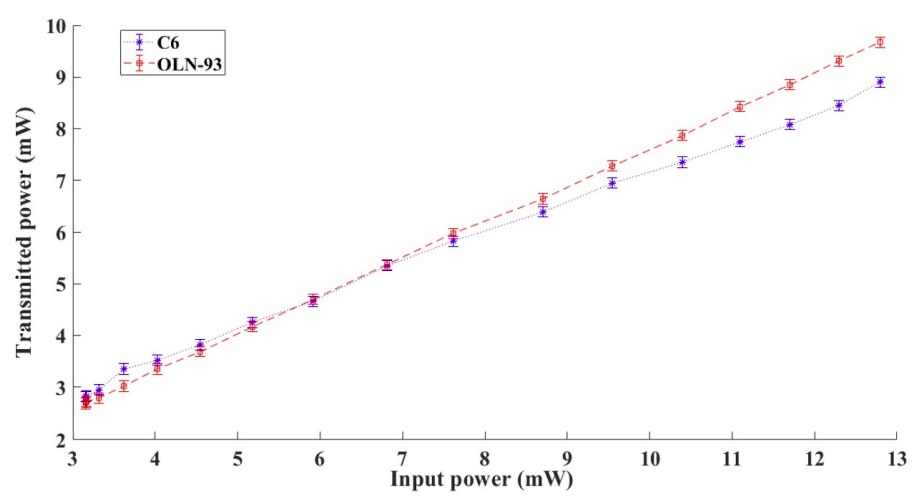Abstract
Cancer patients who have a diagnosis in the early stage of the disease have better chances for therapy. Thus, development of new diagnostic procedures is needed for the early detection of cancer. Measuring and analyzing the light that is scattered by the cells can be utilized to monitor early variations associated with cancer evolution. The key hypothesis behind this research was the application of the Z-scan method to progress the precision of detecting the C6 glioblastoma multiforme cancer cells and the OLN-93 normal glial cells. A Nd:YAG CW laser with a wavelength of 532 nm was used. The laser beam passed through the prepared samples and the transmittance power is distinguished by dislocation. Finally, the nonlinear refractive index and the extinction coefficient of the samples were determined. Our study showed that the extinction coefficient of the C6 and OLN-93 cells were 49 ± 3 and 33 ± 2, respectively. Also, the sign and value of the nonlinear refractive index (n2) for the C6 and OLN-93 cells was −5.44 × 10−7 cm2 w−1 and +6.07 × 10−7 cm2 w−1, respectively. According to this study, the sign of the n2 index for the C6 and OLN-93 cells was negative and positive, respectively. Our results suggested that the nonlinear refractive index of the cell samples and Z-scan technique could be an applicable means for identifying glial cancer cells from normal cells.


